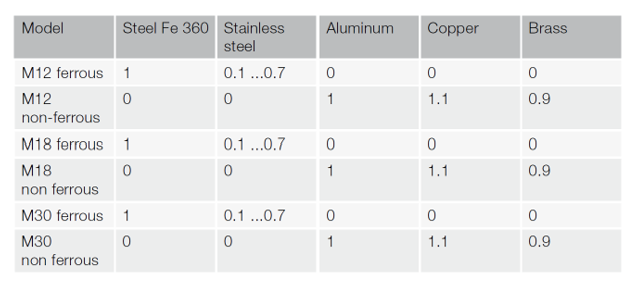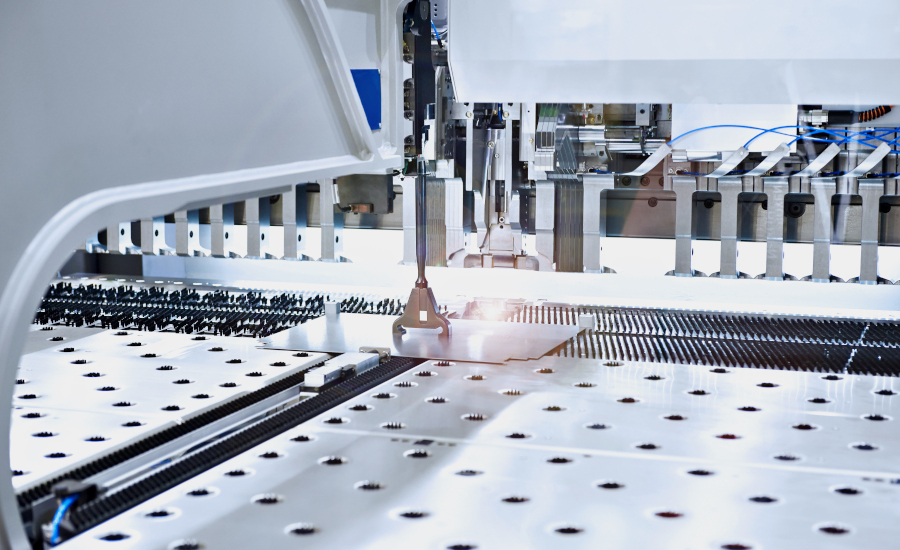
Detecting metallic (ferrous) objects is a common application in many industries, including manufacturing, automotive, and aerospace. Inductive sensors are a popular choice for detecting metallic objects because they are reliable, durable, and cost-effective. Detecting a metallic object, however, is not always as simple as it seems, especially if you need to differentiate between two metallic objects. In such cases, it is crucial to understand the properties of the metals you are trying to detect, including whether they are ferrous or non-ferrous.
Ferrous vs. non-ferrous
Ferrous metals, such as mild steel, carbon steel, stainless steel, cast iron, and wrought iron, contain iron. They are typically magnetic, heavier, and more likely to corrode than non-ferrous metals, which do not contain iron. Aluminum, copper, lead, zinc, nickel, titanium, and cobalt are examples of non-ferrous metals. They are typically nonmagnetic, lightweight, and less likely to corrode.
Sensing ferrous and non-ferrous metal:
When it comes to detecting ferrous and non-ferrous metals using inductive sensors, the reduction factor plays a crucial role. The reduction factor is the ratio of the sensor's effective sensing distance for a given metal to the sensor’s effective sensing distance for steel. In other words, it is the degree to which a metal affects the sensing range of an inductive sensor. Ferrous metals typically have less of an effect on sensing range than non-ferrous metals because inductive sensors function based on the law of induction, and magnetic metals are more likely to interact with the magnetic field created by the sensor.
The reduction factor for each type of metal varies depending on the metal’s properties. Ferrous metals typically have a higher reduction factor than non-ferrous metals, which means they can be detected from a greater distance. For example, both steel and stainless steel have a reduction factor of 0.6 to 1, which means they can be detected from the full switching distance of the sensor of 4 mm. In contrast, non-ferrous metals, such as aluminum, copper, and brass, have a lower reduction factor of 0.25 to 0.5, which means they can only be detected from a fraction of the operating switching distance, typically 1 to 2 mm.

Understanding the reduction factor for each metal allows you to answer the question of what happens when you need to differentiate between two metallic parts. If one metal is ferrous and the other is non-ferrous, then you can place the sensor at a distance that will detect the ferrous metal but not the non-ferrous metal. However, this may not be an efficient solution if the metals have similar reduction factors, or if you need to detect the non-ferrous metal over the ferrous metal.
Using ferrous-only or non-ferrous-only sensors
The better solution is to use a ferrous-only or non-ferrous-only sensor. These sensors are specifically designed to detect only one type of metal and ignore the other type, resulting in a reduction factor of zero. Ferrous-only sensors detect only ferrous metals, and their reduction factors range from 0.1 to 1 for steel and stainless steel, while the reduction factors for non-ferrous metals such as aluminum, copper, and brass are zero. Non-ferrous-only sensors detect only non-ferrous metals, and their reduction factors range from 0.9 to 1.1 for aluminum, copper, and brass, while the reduction factors for ferrous metals are zero. Using ferrous-only or non-ferrous-only sensors eliminates the need to adjust the mounting distance of a standard inductive sensor to detect a ferrous metal over a non-ferrous metal.

Overall, selecting the right sensor for your application depends on the type of metals you need to differentiate and detect. If you are dealing with ferrous and non-ferrous metals, you can use a standard inductive sensor, but you need to be aware of the reduction factor for each metal type and adjust the mounting distance accordingly. If you need to detect only one type of metal, however, a ferrous-only or a non-ferrous-only sensor is the better option. These sensors are specially designed to ignore the other metal type, eliminating the need to adjust the mounting distance.
By understanding the differences between ferrous and non-ferrous metals and the capabilities of different sensors, you can optimize the metal detection system for maximum efficiency and accuracy.
